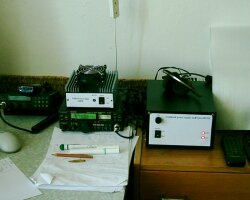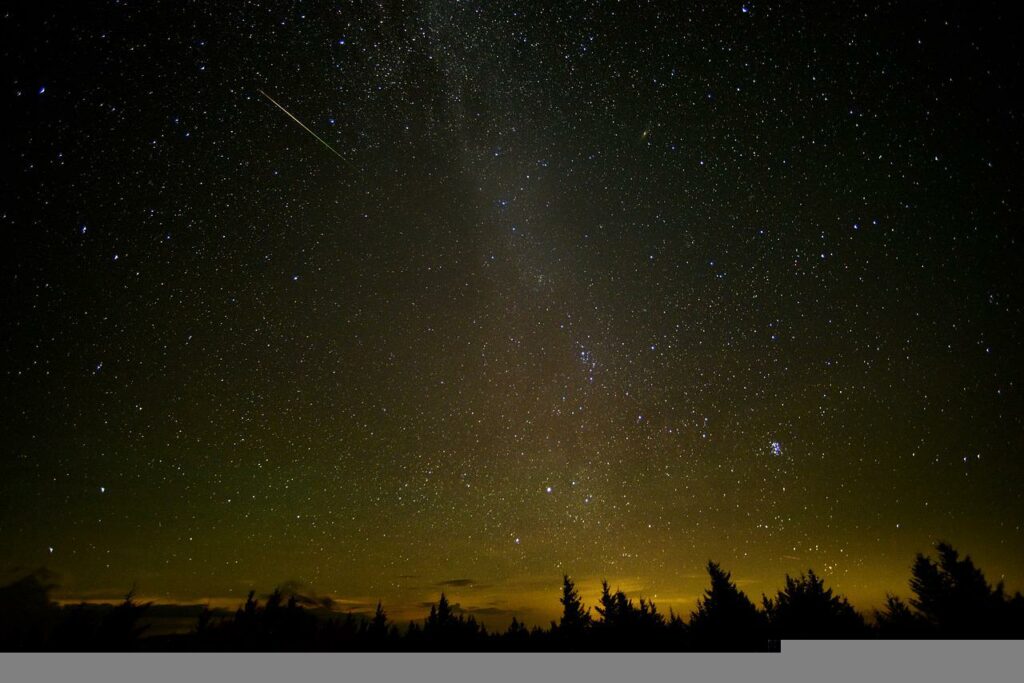„LZ1KWT 27 27 OM0AAO LZ1KWT 27 27 OM0AAO“: tak obyčajne znejúci riadok. Ale nie! Je to riadok z môjho prvého MS spojenia, ktoré som urobil v sobotu nadránom. Spojenie, ktorému predchádzala polročná príprava.
Hneď na začiatok sa chcem poďakovať EU VHF komunite (aj keď oni tieto riadky asi čítať nebudú) sústredenej na ON4KST chate a zvlášť Matejovi OK1TEH za cenné rady a povzbudenie.
Teória a príprava na meteor scatter

Teóriu MS prevádzky si môžete prečítať v rôznych rádioamatérskych publikáciách. Tento článok môže byť inšpiráciou pre tých, ktorí by raz chceli podobný riadok zazrieť na svojom monitore….
Vždy je najlepšie si veci čo najviac uľahčiť. Najschodnejšia MS cesta vedie cez program WSJT od Joea K1JT. Dostať sa k nemu môžete na Internete, napr. na Make More Miles on VHF, čo je výborná stránka o VKV. Druhou zaujímavou stránkou je https://www.vhfdx.de, na ktorej je množstvo odkazov na stránky súvisiace s VKV prevádzkou.
Ale nielen Internet je vhodný ako pomôcka MS prevádzky. Skoro tak dobre a niekedy aj lepšie poslúži paket, či už na dohováranie skedov alebo DX cluster. Ten je dostupný z viacerých miest aj na Internete, napr. GB7BAA, alebo OH2AQ.

Na začiatok je lepšie sústrediť sa na rojové meteority, konkrétne na dobu ešte pred predikovaným maximom, prípadne naň. Na ich termíny pravidelne upozorňuje množstvo rádioamatérskych stránok. Odrazy sú možné iba za určitých podmienok (azimut a elevácia radiantu roja, rýchlosť pohybu a intenzita). Výbornú orientáciu o možnostiach spojenia do určitého smeru poskytuje program The Meteor Scatter Predictor od DL5BAC.
Meteor scatter prakticky
Začínal som príjmom augustovými Perseíd, pretože som neveril, že s 25W a 10 decibelovou anténou je možné urobiť spojenie. Nedávno som na ON4KST sledoval spojenie medzi dvoma stanicami, pričom jeden z nich mal iba 25W a 7 elementovú anténu! Trvalo to síce dlhšie, ale nakoniec ho skompletizovali.

Nasledujúce roje som tiež iba „počúval“ a kompletizoval zdroj a koncový stupeň s KP920A. Decembrové Geminidy som však nestihol. Sked s Claudiom IV3DXW po maxime bol neúspešný, za tridsať minút som prijal jediný ping. Na tropo som však urobil HA75MS.
Aj to bolo na niečo dobré… Stanice dávajúce výzvu na 144.370 už zvyknú počúvať na frekvencii, kde sa preladia. Hneď ako dekódujete vysielanie stanice o ktorú máte záujem, nalaďte sa a začnite vysielať. Ja som to zistil až po pár reláciách HA75MS…
Pokiaľ Vám stanica neodpovie do 15-20 minút, neoplatí sa vysielať ďalej. Skompletizovanie MS procedúry by totiž trvalo veľmi dlho. Ak zachytíte vysielanie, ktoré nie je určené Vám, okamžite prestaňte vysielať.
Veľmi dôležitou vecou pri MS je presný čas (na sekundu). Pri nepresnom čase sa totiž môže stať, že stanice budú vysielať v rovnakej perióde. Kto má možnosť synchronizovať počítačový čas s atómovým normálom cez Internet, nech ju určite využije.

Záznamy meteor scatter


[1] Meteor scater spojenie odrazom od meteorických stôp: Gyetvay Zoltán OM7AQ, Zborník prednášok Tatry 1998
[2] WSJT program na komunikáciu pomocou slabých signálov od K1JT: Ing.Zajac Pavol OM5CM, Zborník prednášok Tatry 2001
[3] WSJT – nová digitálna prevádzka pre VKV DX-manov: Roman Kudláč OM3EI, Rádiožurnál 4/2001
[4] The ARRL Operational Manual
